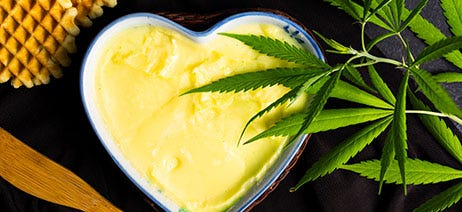
Cannabutter Recipe: How to Make Cannabutter in 5 Steps
Cannabis butter, or cannabutter, is butter infused with the active compounds, such as THC and CBD, from cannabis flowers. Easy to prepare and customizable in potency and flavor, cannabutter is perfect for everyone from kitchen novices to seasoned chefs.
In this guide, you’ll learn all about cannabis butter, including:
- What is Cannabis Butter & How Do You Use It?
- How Do You Choose the Right Flower for Cannabutter?
- DIY Cannabutter Recipe [5 Steps]
- Other Cannabutter Cooking Methods
- How Do You Dose Cannabutter?
- How Should You Store Cannabutter?
- Frequently Asked Questions
What is Cannabis Butter & How Do You Use It?
Cannabis butter is butter that has been infused with fat-soluble1 cannabinoids–THC, CBD, etc.–that bind to the fat molecules in the butter to make an ideal ingredient in many cannabis culinary creations.
Cannabis butter can replace non-infused butter in virtually any recipe, making it an incredibly versatile kitchen staple for cannabis enthusiasts. It can be used in cooking, spreading on toast, and baking treats like cannabis cookies and marijuana brownies.
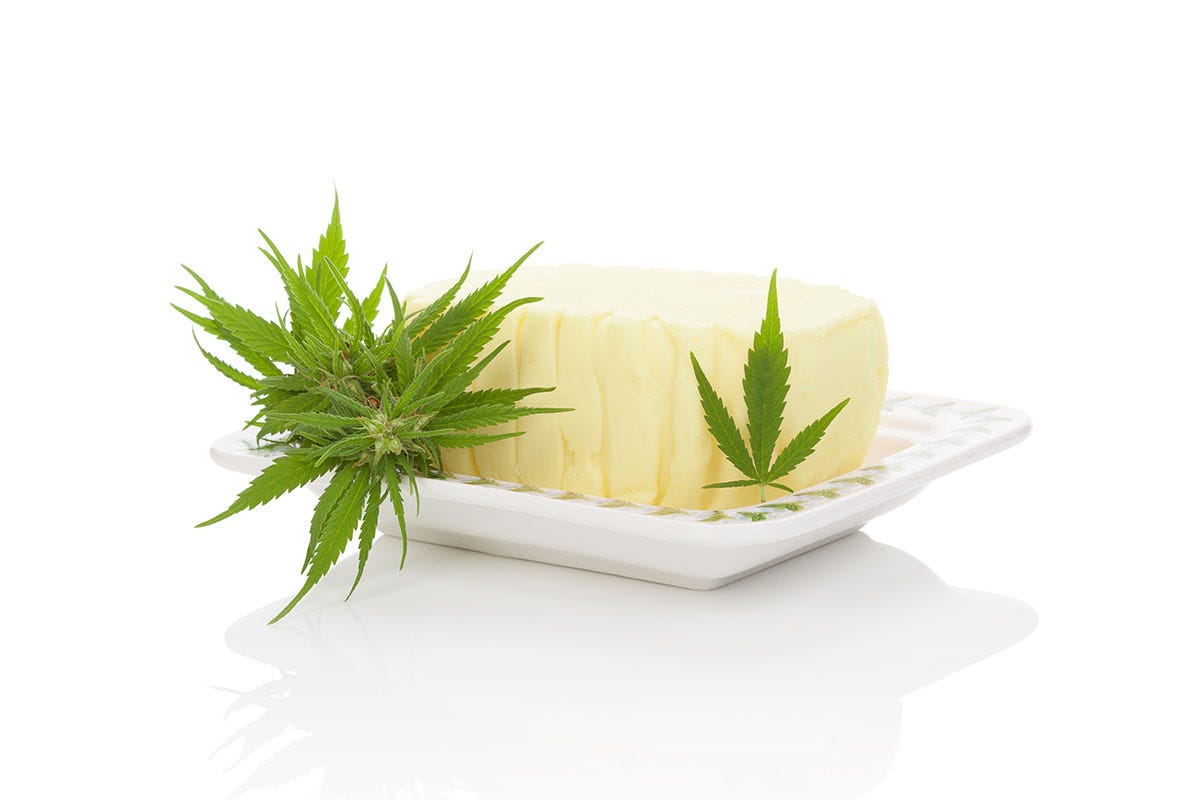

How Do You Choose the Right Flower for Cannabutter?
The choice of cannabis strain affects the flavor and potency of your cannabutter. Factors to consider include the strain’s THC to CBD ratios, terpenes, and whether it’s sativa or indica dominant. Ultimately, the right flower depends on your preference, but chat with your budtender to help you find the best strain.
DIY Cannabutter Recipe [5 Steps]
Similar to canna-oil, making cannabutter is easy, whether you’re a pro or a newbie in the kitchen. Here are the tools and ingredients you’ll need to get started.
Ingredients:
- 1 cup of your (unsalted works in sweet and savory recipes)
- 1 cup of water
- 1 cup of cannabis flower
Tools:
- Cannabis grinder
- Baking sheet
- Saucepan
- Thermometer
- Cheesecloth or metal strainer
- Storage container
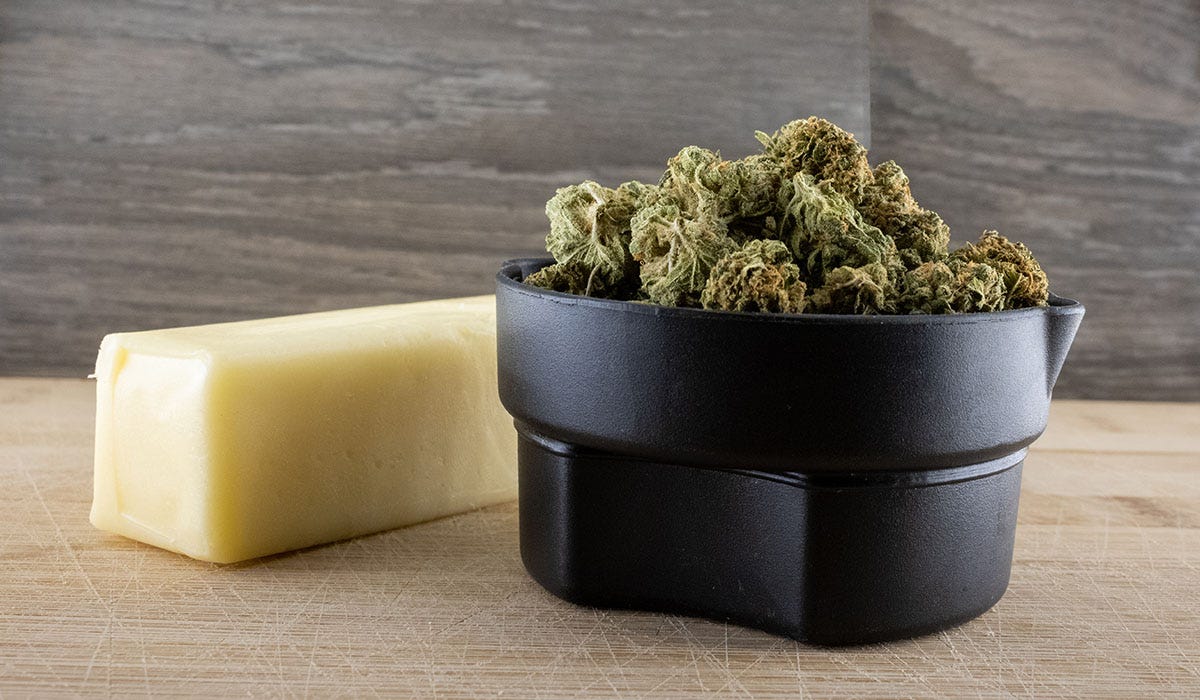

Step 1: Decarboxylate Your Flower
Begin by decarboxylating the cannabis flower to activate the THC, CBD, and other cannabinoids. Spread the cannabis on a baking sheet and bake at 245°F for 30-40 minutes.
Step 2: Grind Your Flower
Once cooled, grind the cannabis coarsely with the cannabis grinder or your fingers. Don’t grind it too finely, as you don’t want flower bits in your cannabutter.
Step 3: Melt Your Non-Infused Butter
Add the water and butter to a saucepan. Over medium heat, fully melt the butter, but ensure it doesn’t burn.
Step 4: Add Flower
Once the butter has completely melted, add the ground cannabis to the mixture. Keep the temperature low—ideally around 160-180°F— to avoid boiling. Simmer the mixture for two to three hours, stirring occasionally.
Step 5: Strain the Butter
When the cannabis is infused in the butter, strain the mixture with a metal strainer or cheesecloth to remove the plant material. Once cooled, the cannabutter is ready to use.
Other Cannabutter Cooking Methods
Besides using a stovetop, other techniques to make cannabutter include:
Crock Pot Cannabutter
Learning how to make cannabutter in a crock pot? The slow cooker technique is generally more hands-off than using the stovetop. You’ll combine the decarbed flower with butter in the crock pot and cook it on low for four to six hours. Strain the mixture and let it cool before adding it to a recipe or storing it in a glass jar.
Pressure Cooker Cannabutter
You can decarb and infuse the butter with cannabis in a single process when making cannabutter in a pressure cooker (like an Instant Pot). Grind the flower, place it in a glass jar with the lid on, and use the “Slow Cook” setting to decarboxylate the cannabis for 35 minutes.
Add the butter to the jar and water to the pot. Use the “Pressure Cook” setting and set the timer for 30 minutes. Cool the mixture and remove the jar from the instant pot using tongs. Let the jar cool before straining the cannabutter.
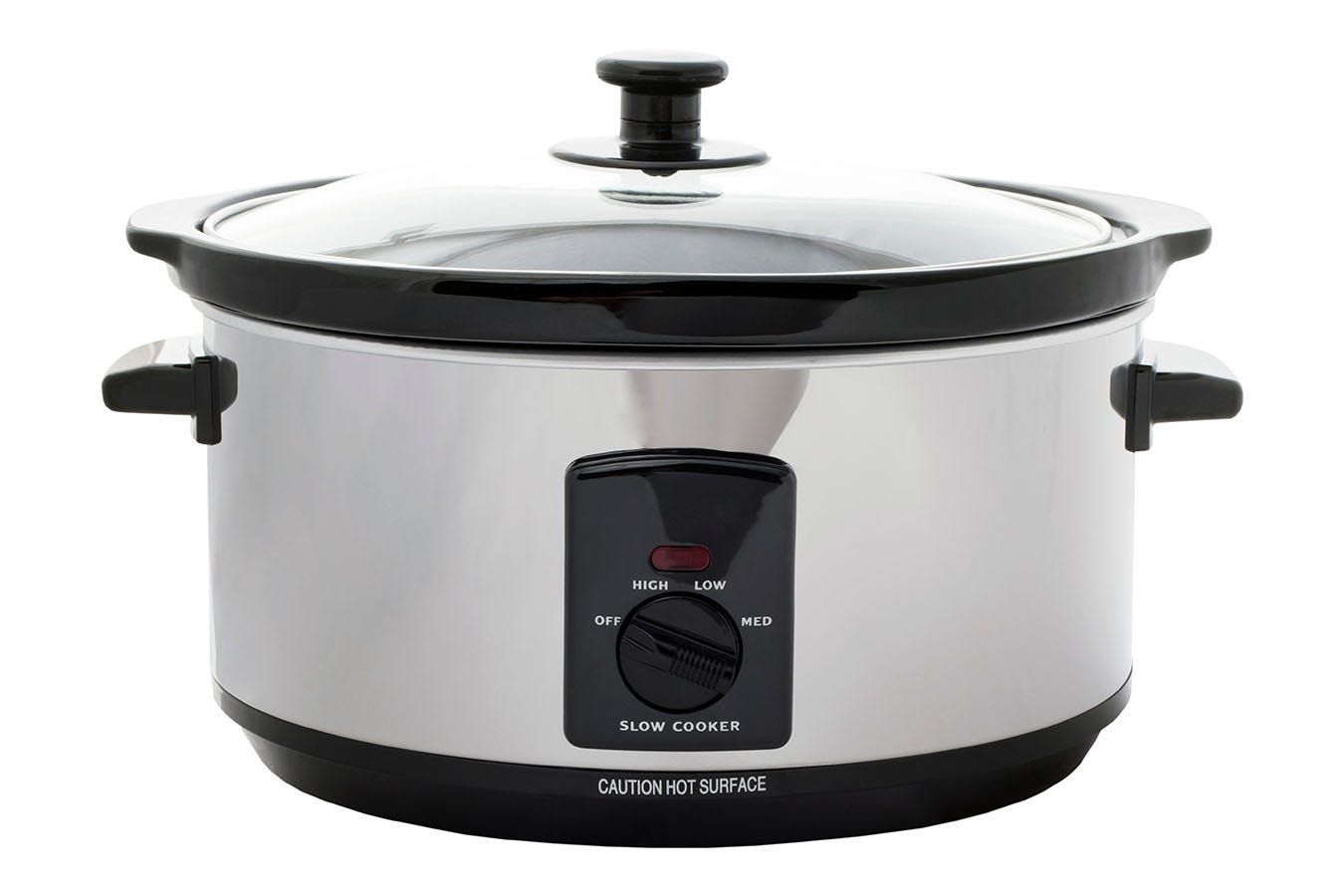

Sous Vide Cannabutter
Decarb the flower and add it to a resealable bag before adding the cooled melted butter. Set the cooking divide to 185°F and add the bag to the water to soak for four hours. Remove the mixture from the water bath and strain it. Use it immediately or store it for later use.
How Do You Dose Cannabutter?
The dosage of cannabutter depends on the potency and quantity of the flower as well as the temperature and duration of the decarbing process. Start with small doses (around 5 milligrams of THC), and adjust it based on the desired effects. The standard dose2 for edibles is 10 milligrams.
For stronger or milder cannabutter, change the strength of the cannabis and the ratio of butter to marijuana. For a more potent cannabutter, use a higher THC strain or more cannabis, while you’d do the opposite for a milder effect. Increasing the infusion time results in a stronger cannabutter.
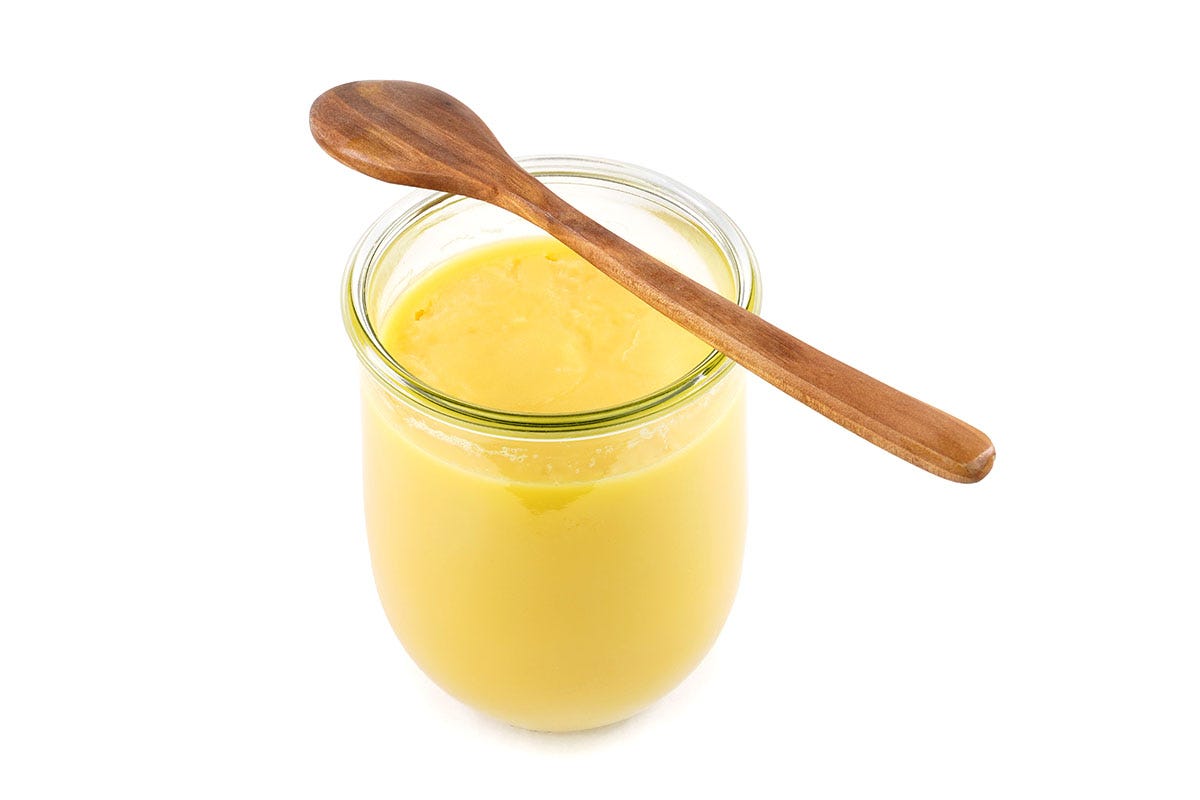

How Should You Store Cannabutter?
Store cannabutter in an airtight glass container, like a sealed mason jar, in the fridge3 for two to four weeks or in the freezer for 6-12 months. Check the cannabutter before using it, and discard if it is rancid, discolored, or moldy.
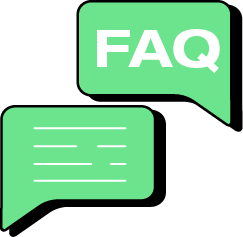

Frequently Asked Questions
Have more questions? We have answers about making cannabutter:
How do I make a potent cannabutter?
Make a potent cannabutter by choosing a cannabis strain with a high THC content, using a higher ratio of cannabis to butter, or infusing the cannabis for longer.
Can I use a crock pot to make cannabutter?
You can use a crock pot to make cannabutter. This slow, hands-off infusion process is ideal for developing flavor and potency without burning the mixture.
Is it possible to make cannabutter in a pressure cooker?
Yes, you can quickly make cannabutter in a pressure cooker (such as an Instant Pot) since you decarboxylate and infuse the cannabis-butter mixture in one device.
Can trim be used to make cannabutter?
While trim is less potent4 than the buds, you can use it to make cannabutter.


Making Cannabutter at Home
Making your own cannabutter at home is a rewarding experience, helping you to create delectable cannabis-infused culinary creations. Experiment with different cannabis strains, or consult your favorite budtender for the best cannabis flower for cannabutter.
Sources:
1. “Mechanisms of Action and Pharmacokinetics of Cannabis,” National Library of Medicine, November 30, 2020, https://www.ncbi.nlm.nih.gov/pmc/articles/PMC8803256/
2. “Your Best Edibles Dosing Chart,” The Health Center, May 19, 2023, https://www.thchealth.com/news/your-best-edibles-dosing-chart/
3. “How to Store Cannabutter,” Storables, February 27, 2024, https://storables.com/articles/how-to-store-cannabutter/
4. “Trim,” Leafly, https://www.leafly.com/learn/cannabis-glossary/trim


